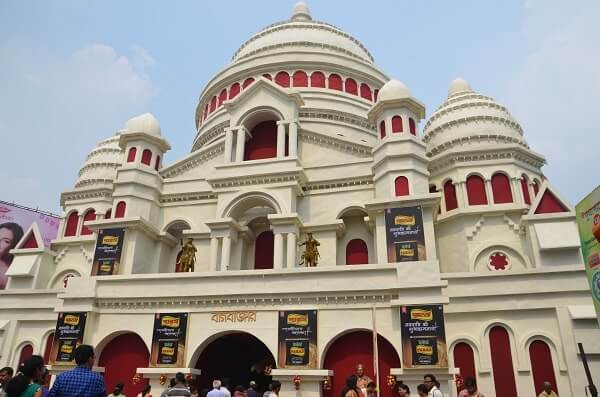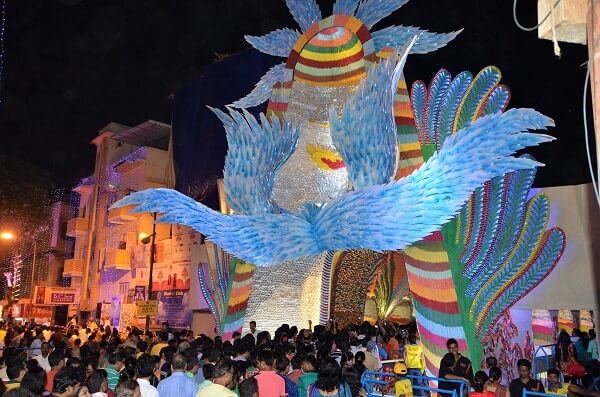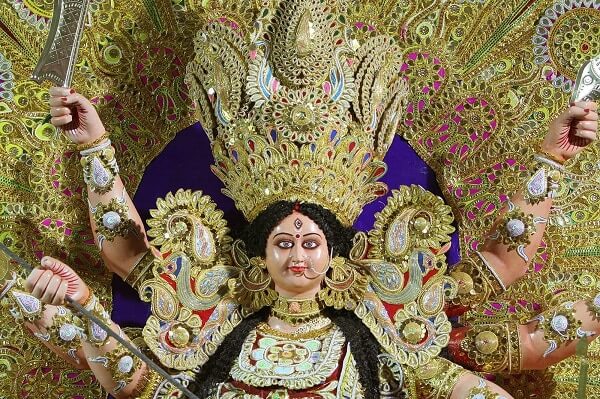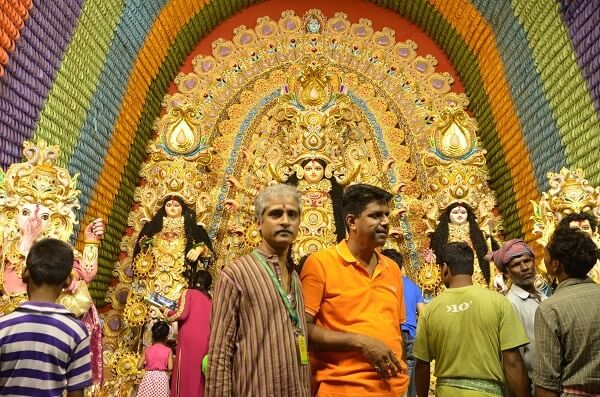Urban nests in almost every corner of the world – New York, Toronto, London, Johannesburg, Singapore or Sydney – may have no direct synergy with the ‘City of Joy’, but every year during the auspicious time of Durga Puja in September-October, all get allied to Kolkata and traditional Bengali culture through the Bengali diaspora living there.
Durga Puja is an annual, four-day religious and social fiesta that has been celebrated with great fervour in Bengal for over a century. It involves the worship of the ten-armed Goddess Durga, esteemed as the Divine Mother or Ma.
As per Hindu mythology, revering this goddess symbolizes the crushing of all evil forces. The tradition dates back millennia to the time of the epic Ramayana when Lord Rama prayed to Durga to demolish the demon god Ravana. This Bengali ritual is part of the nine-day Navratri festival fêted elaborately in central and northern India to delight at the demolition of demons.
Early beginnings
In the 18th century, when Kolkata was the capital of the British colonizers, the city’s wealthy citizens began organising this religious ritual at their homes. Soon it became a status symbol among the bourgeois, with cultural extravaganza like theatrical performances and musical soirees thrown in. It took on the shape of a festival; however, commoners had limited opportunity for participation. Early in the 20th century, reformists initiated the move to celebrate the event at a community level, open to all irrespective of caste and creed. So what was earlier an exclusive affair, began its transformation into a community event by the name of Durga Puja or just ‘Pujo’ as per Bengali colloquial.

Community interest increased, and almost every locality throughout Bengal began organising these pujas at an open space like a barren field or an urban park. If none were available in the area, then there was no hesitation to use street corners or laneways, restricting passage of vehicular traffic. Using bamboo frames, tarpaulin and multi-coloured textiles, temporary temples called ‘pandals’ were built on site to house the deities and perform the religious rituals.
Contemporary experience
However, what was earlier an event of social engagement and pageantry with religious sentiment, has turned today into a big-budget commercialised venture. Instead of raising donations from locals in the area, much of the funding comes from corporate houses. Nonetheless, the scale, grandeur and utter extravaganza of the event, without any doubt, makes it one of the biggest festivals on earth.
The décor for the big pujas is now based on various innovative themes, blending antiquity with modernity. These range from rural Bengali craftsmanship and Rajasthan folklore to Buddhist temples, British royalty, African jungles and even Brazilian football. Creativity has no limits when it comes to themes for Kolkata’s Durga Puja. Every year there is something new and innovative to wonder at. Some organizers are brave enough to adopt themes around burning social issues such as “religious harmony” “empowering women” and “climate change”.
READ ALSO: Durga Puja: Bollywood moments that capture Pujo festivities

Crafters’ dream
There’s lots of novelty in the making of the pandals as well. Some are built impressively out of recycled material such as soft drink caps, old gramophone records, broken crockery, jewellery boxes, earthen pitchers and sugarcane pulp. Some take the shape of iconic structures like London’s Tower Bridge, Delhi’s Lotus Temple in Delhi or the Parliament House in Budapest. So intricate is the quality of the craftsmanship that they indeed look like the original version.
The artwork inside is equally admirable. Plush chandeliers for example might lead you to believe you are inside a palace or a grand temple.
The design and styles of the deity also reflect the induction of talent. Some still maintain the traditional image, while others may be reimagined from other Hindu temples in India and Nepal.
Lighting experts decorate the city into an unbelievable parade of lights throughout the night.
Large corporations offer awards to recognise the talents of artisans and organisers and to inspire all to do better the following year.
The legend behind Pujo: ‘Homecoming’
Tradition tells us that this time of the year marks Ma Durga’s annual visit to her parental home, her four kids in tow. These are, of course, Lakshmi, Saraswati, Karthikeya and Ganesha. They descend to the mortal land from their abode high in the Himalayas.
This perception of ‘homecoming’ in the earlier days inspired Bengalis living outside Bengal to return home to spend a joyous time with family.
Over time, as this wasn’t always possible for Bengalis living outside, Durga Puja in Kolkata style was initiated by Bengalis in other parts of India and abroad.
READ ALSO: Durga puja dessert recipes to sweeten your festive season
Today Durga Puja is celebrated by overseas settled Bengalis in many parts of the world. It may not be on the exact date and could be just for a day or two instead of four. There’s no shortage of enthusiasm though, to keep the social tradition alive. This way, Bengalis worldwide reconnect in spirit with Kolkata and Bengal.
It’s no exception here in Australia. Durga Puja is celebrated in every capital city – and in some regional ones – the major ones being those organised by the Bengali Association of Victoria and Bengali Association of NSW in Melbourne and Sydney respectively.
Covid19 restrictions will make the celebrations virtual again this year, but look set to be good enough to reprise in our minds, the gaiety of Kolkata at this time.
READ ALSO: A tribute to the food of Kolkata by Mohona Kanjilal
Link up with us!
Indian Link News website: Save our website as a bookmark
Indian Link E-Newsletter: Subscribe to our weekly e-newsletter
Indian Link Newspaper: Click here to read our e-paper
Indian Link app: Download our app from Apple’s App Store or Google Play and subscribe to the alerts
Facebook: facebook.com/IndianLinkAustralia
Twitter: @indian_link
Instagram: @indianlink
LinkedIn: linkedin.com/IndianLinkMediaGroup






